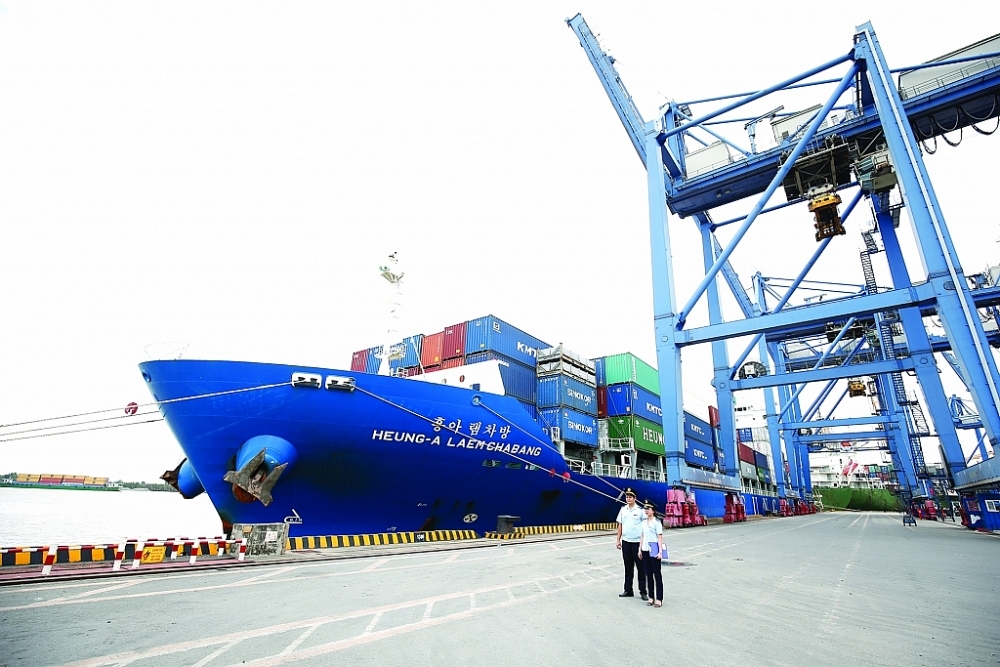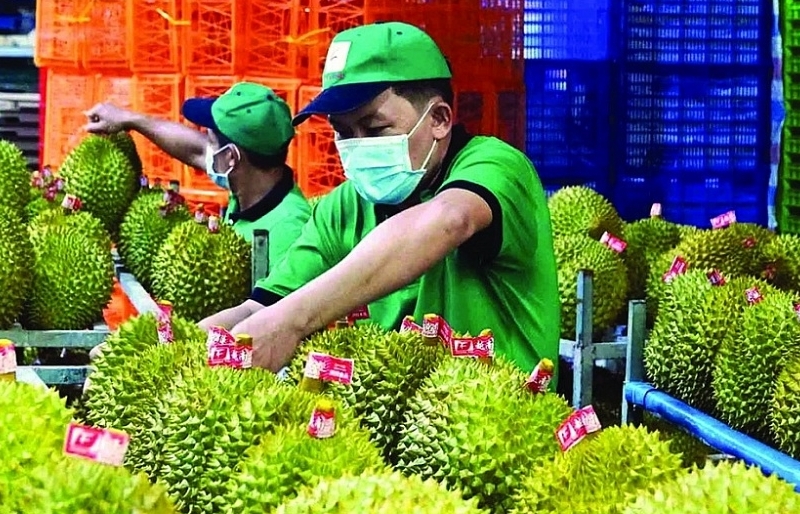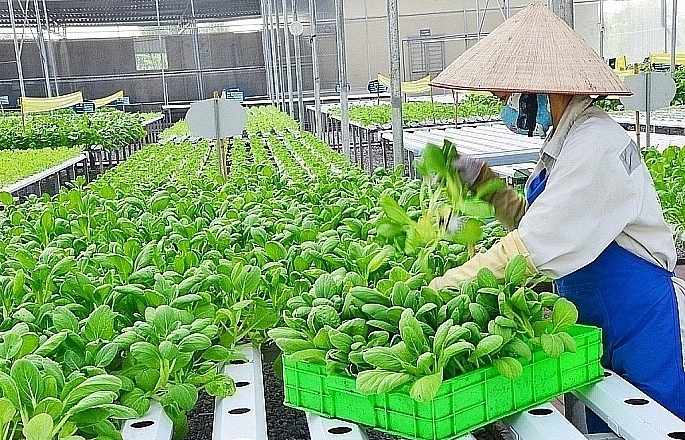Sea export: How to increase initiative?
| Vietnam’s wood exports expected to hit new record | |
| Exports grow significantly in first quarter |
 |
| Customs officers at Cat Lai Port Customs Branch (HCM City Customs Department) supervise import and export goods. Photo: Huy Kham |
Switch from sea to railway
Tran Thanh Hai, Deputy Director of Import and Export Department (Ministry of Industry and Trade), said the current sea freight to Europe is US$6,000-8,000 per container and to the US is US$5,000-7,000 per container, which is reduced a bit compared to the peak time.
Regarding the Ever Given ship stuck in the Suez canal, affecting the cost of shipping, Nguyen Dinh Tung, General Director of Vina T&T Group Company (a company specialising in exporting agricultural products to the US, Australia, Japan, and Canada) was worried by long transit times for shipments. The high cost is inevitable, but the delay in delivery to partners, affecting the business’ reputation and product quality, is even more important. According to Tung, Vietnamese firms are quite passive in transporting export goods by sea because they mostly depend on foreign shipping lines.
The leader of the Import and Export Department said the incident at the Suez Canal showed the vulnerability of the global supply chain. In case of upheavals such as war, terrorism, storms, earthquakes, or diseases, bottlenecks will occur, and the trade flow will stop.
It is estimated 95% of the volume of imported and exported goods from Vietnam to Europe and vice versa must go through the Suez Canal. There is another route that bypasses Africa, but it takes about 10 more days, which is very costly.
“In the Asia-Europe shipping route, businesses should consider and take advantage of intermodal rail transport instead of sea only. For example, with only about 29-30 days shipping from Vietnam to Germany and a slight increase in price compared to the shipping rate at the moment, rail transport is a suitable option in the current context,” said Hai.
Producing empty containers is feasible
Due to the lack of empty containers that has pushed up shipping rates, some Vietnamese firms, such as Hoa Phat Group, decided to invest in the production of empty containers.
According to Hai, containers are often belonged to shipping lines, not manufacturers. However, during the Covid-19 pandemic, the scarcity of empty containers opened up a business opportunity. Producing empty containers is not difficult for Vietnamese firms, but not all units can do it because containers use high-quality steel from China.
China is the largest steel and container producer in the world. If firms were to import steel from China to produce containers in Vietnam, the price will make it difficult to compete.
“Fortunately, we have two big steel producers - Hoa Phat and Formosa that are capable of producing special steel to make container shells with great bearing capacity. Recently, Hoa Phat announced they would produce containers, as a value-added steel product. I believe they can do it,” said Hai.
From the perspective of enterprises, Nguyen Dinh Tung said the Government should work with foreign shipping lines in Vietnam so they would support Vietnamese export enterprises, especially in the current difficult context.
To take the initiative in production and business in the long run, the leader of the Import and Export Department said firms must be aware of the possible risks at any time such as diseases, natural disasters, and fires to propose response scenarios. Each unit needs to have a reserve fund, diversify the import-export market, and import raw materials from different sources instead of one country. For transportation activities, they must also have a scenario to consider the switch to railway because shipping by sea to Europe is congested, and what the cost of shipping by air is.
“Buying insurance for goods is another issue. We cannot prevent external incidents but can minimise risks and losses thanks to insurance. In fact, many Vietnamese firms do not want to buy insurance because they think it is useless,” said Hai.
Related News

Promoting agricultural exports to the Japanese market
13:55 | 22/12/2024 Import-Export
Latest News

Nghệ An Province anticipates record FDI amidst economic upswing
15:49 | 26/12/2024 Import-Export

Green farming development needs supportive policies to attract investors
15:46 | 26/12/2024 Import-Export

Vietnamese enterprises adapt to green logistics trend
15:43 | 26/12/2024 Import-Export

Paving the way for Vietnamese agricultural products in China
11:08 | 26/12/2024 Import-Export
More News

VN seafood export surpass 2024 goal of $10 billion
14:59 | 25/12/2024 Import-Export

Exporters urged to actively prepare for trade defence investigation risks when exporting to the UK
14:57 | 25/12/2024 Import-Export

Electronic imports exceed $100 billion
14:55 | 25/12/2024 Import-Export

Forestry exports set a record of $17.3 billion
14:49 | 25/12/2024 Import-Export

Hanoi: Maximum support for affiliating production and sustainable consumption of agricultural products
09:43 | 25/12/2024 Import-Export

Việt Nam boosts supporting industries with development programmes
13:56 | 24/12/2024 Import-Export

VN's wood industry sees chances and challenges from US new trade policies
13:54 | 24/12/2024 Import-Export

Vietnam's fruit, vegetable exports reach new milestone, topping 7 billion USD
13:49 | 24/12/2024 Import-Export

Aquatic exports hit 10 billion USD
13:45 | 24/12/2024 Import-Export
Your care

Nghệ An Province anticipates record FDI amidst economic upswing
15:49 | 26/12/2024 Import-Export

Green farming development needs supportive policies to attract investors
15:46 | 26/12/2024 Import-Export

Vietnamese enterprises adapt to green logistics trend
15:43 | 26/12/2024 Import-Export

Paving the way for Vietnamese agricultural products in China
11:08 | 26/12/2024 Import-Export

VN seafood export surpass 2024 goal of $10 billion
14:59 | 25/12/2024 Import-Export





